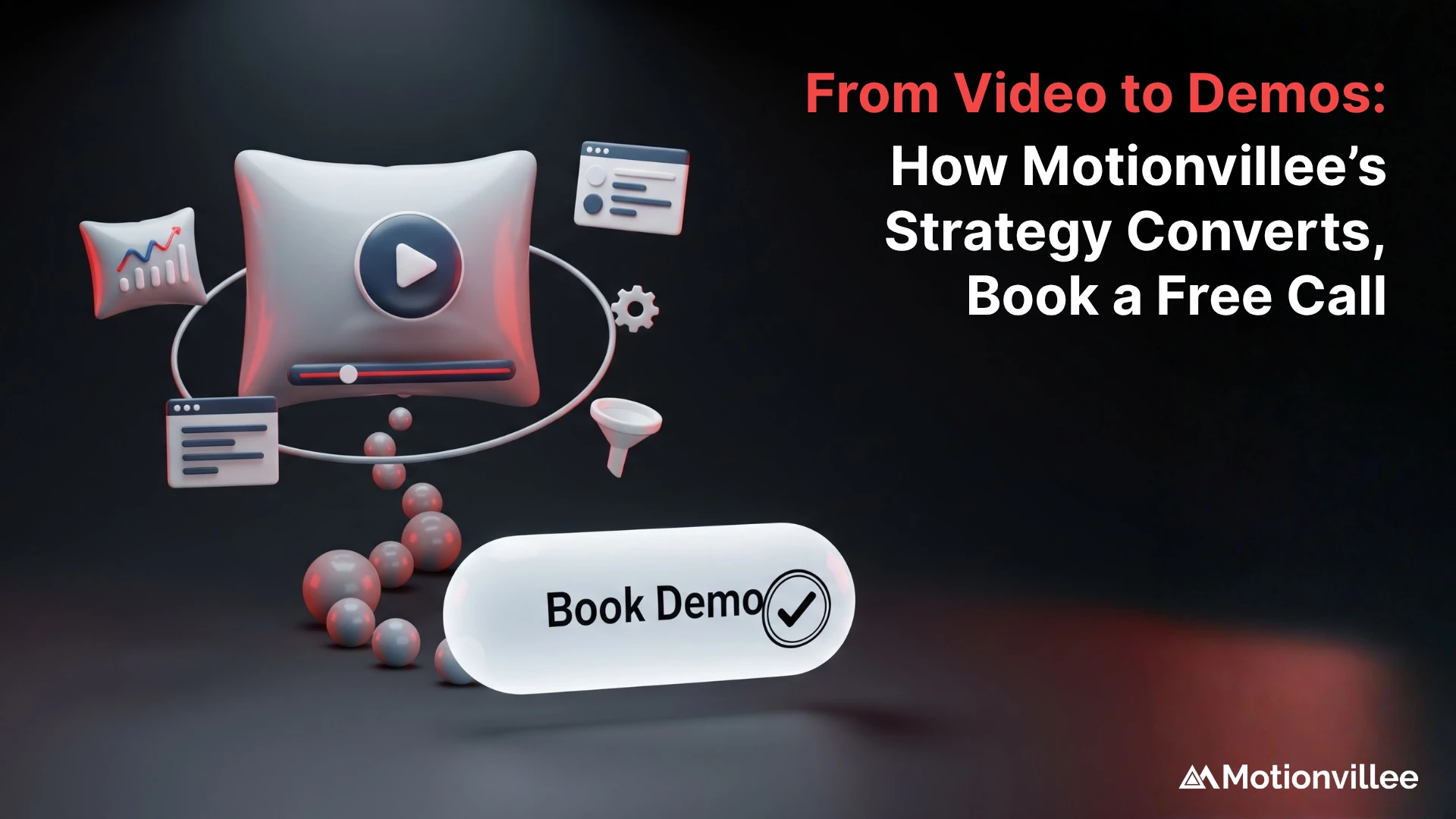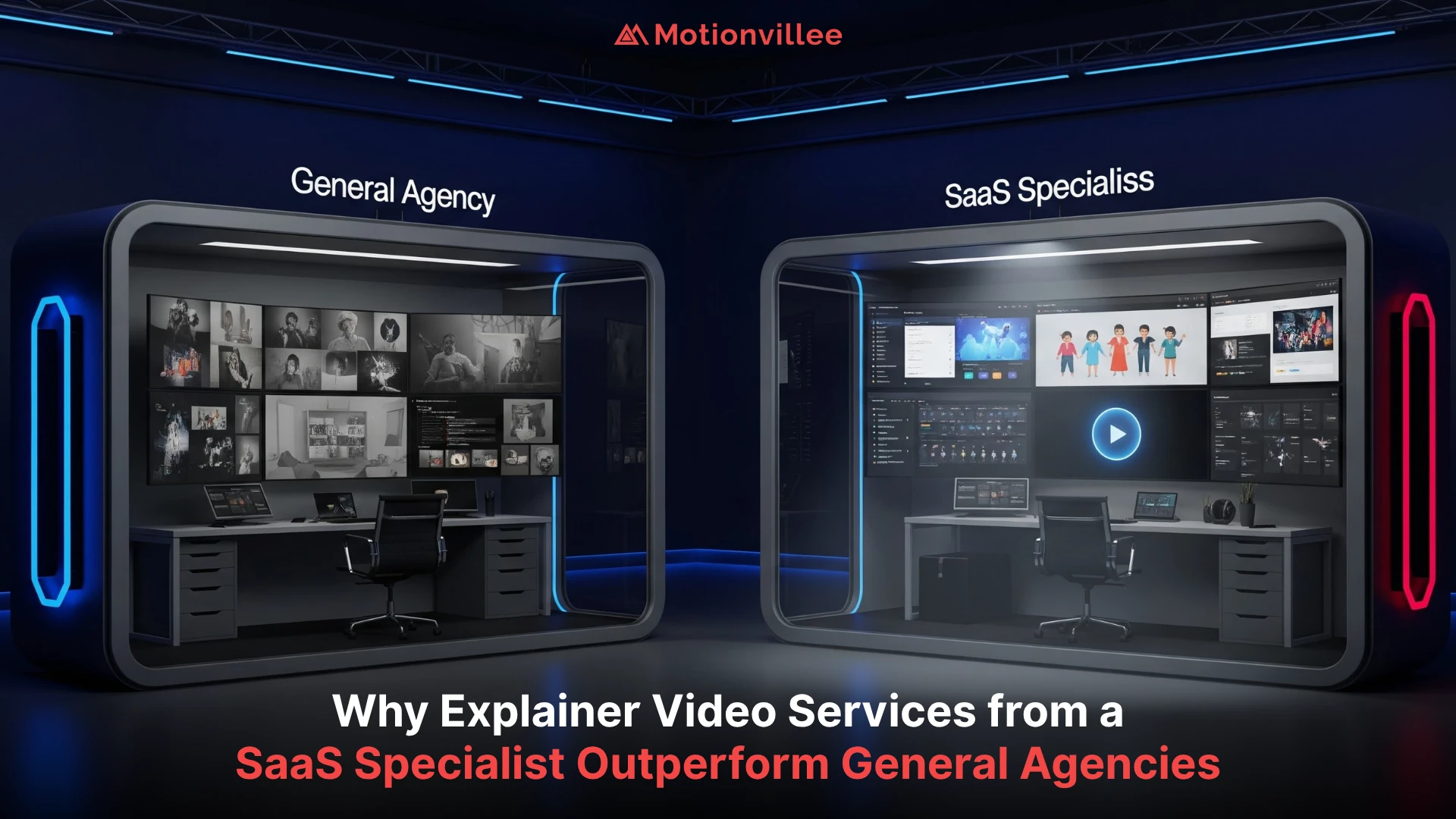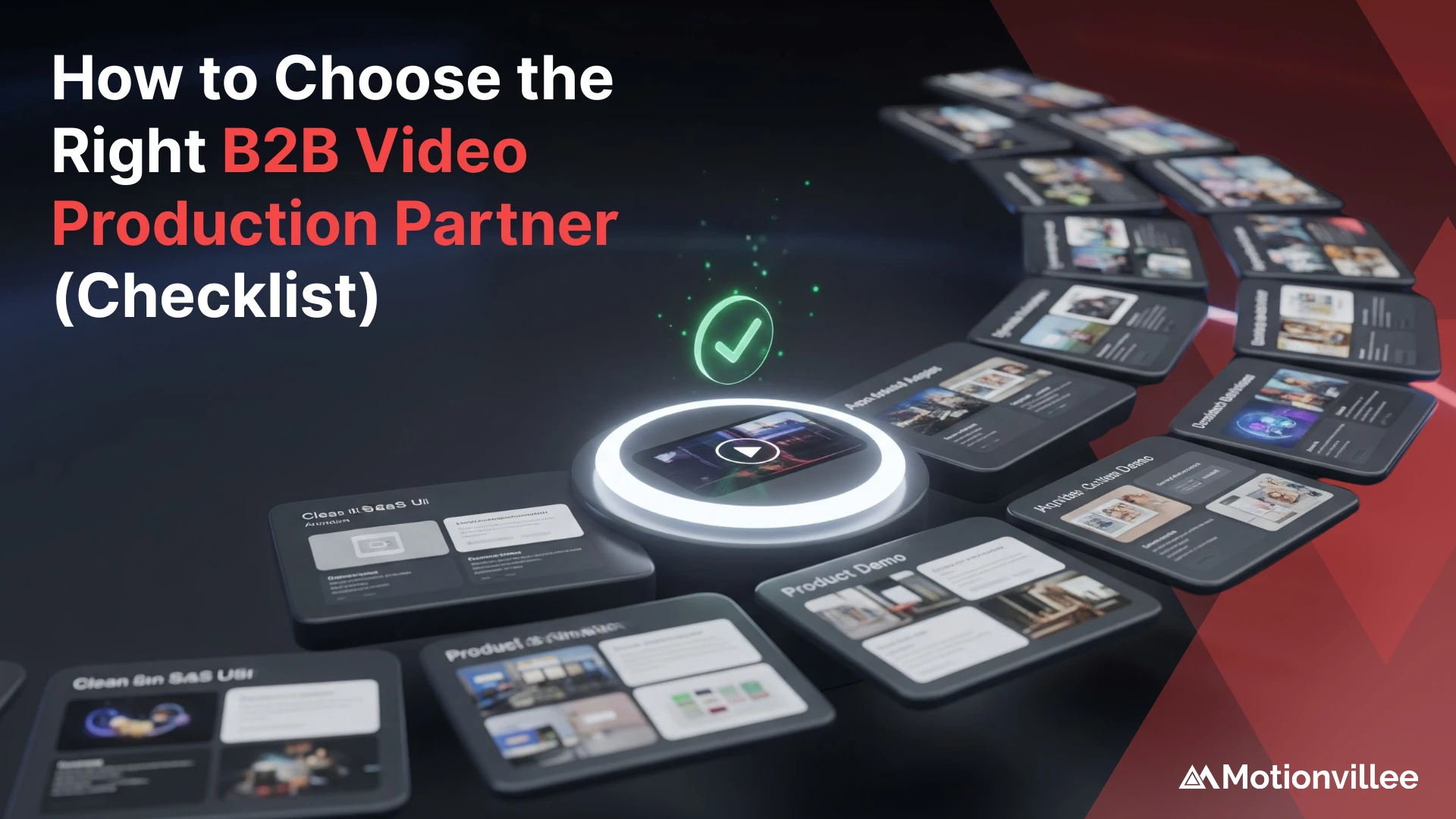Sales personnel are vital to an organization as they serve as the primary link between the company and its customers. They not only drive revenue by converting leads into sales but also gather invaluable feedback that informs product development and marketing strategies.
Their ability to build relationships fosters customer loyalty and trust, enhancing brand reputation. Ultimately, a skilled salesperson can transform a single transaction into a long-term partnership, contributing significantly to the organization’s overall success.
Today, we’re sitting down with Sana, Brand Strategy Director at Motionvillee, who has been instrumental in driving the company’s success. Sana shares how she approaches a particular client and how she handles the long sales cycle in the B2B domain. Let’s dive deep into working with Sana, the Director of Brand Strategy.
1: What is your Role at Motionvillee?
As the Director of Brand Strategy at Motionvillee, my role encompasses leading the sales team to develop and execute strategic sales initiatives that drive revenue growth. I focus on identifying new business opportunities, building strong relationships with potential clients, and understanding their unique needs to tailor our solutions accordingly.
Additionally, I collaborate closely with marketing and product teams to align our offerings with market demands and ensure we deliver exceptional value to our customers. Through ongoing training and support, I empower my team to achieve their targets and enhance our overall sales performance.
2: How do you Prepare for the Sales Call With a Client?
To prepare for a sales call, I conduct a comprehensive analysis of the client’s business model and industry landscape, utilizing tools like competitive intelligence platforms and market reports.
I identify potential pain points by assessing recent developments and challenges highlighted in news articles and industry publications.
I review all prior communications to tailor our value proposition effectively. Additionally, I ensure I’m well-versed in the technical specifications and integration capabilities of our solutions, enabling me to address inquiries confidently and position us as strategic partners.
3: Can you Explain your Process for Identifying and Qualifying Potential Leads?
I target leads that align with our ideal client profile, focusing on industries where we’ve demonstrated success and companies with a clear need for our solutions. After identifying a lead, I qualify them using criteria such as budget, specific needs, and decision-making authority.
This process ensures I prioritize high-conversion potential opportunities. Asking the right qualifying questions—focused on pain points, project timelines, and organizational priorities—is critical to accurately assess their readiness and fit within our sales funnel.
4: How do you Handle Objections and Pushbacks from Potential Clients?
When I encounter objections, I view them as opportunities to gain deeper insights into the client’s perspective. I actively listen to uncover the root cause, whether it’s budget constraints, timing, or doubts about the solution’s fit.
I then respond with data-backed evidence, relevant case studies, or an adjusted solution approach. This method demonstrates our consultative approach and positions us as a strategic partner, not merely a vendor, reinforcing the long-term value we bring to their business.
5: How do you use Social Media Platforms for Prospecting and Closing Deals?
I leverage LinkedIn extensively for prospecting due to its efficiency in identifying key decision-makers and engaging with their content. Some tools like Scrab or Jasper or Buffer help me to find engaging prospects.
By sharing industry insights and success stories, I build credibility and foster trust within my network. To facilitate deal closure, I utilize social media strategically to maintain warm relationships—sharing relevant content, engaging with posts, and sending personalized messages with generative A to sustain momentum in the sales process.
6: What Strategies do you use to Handle a Long Sales Cycle in B2B Sales?
In longer sales cycles, I implement a structured engagement strategy to maintain a strong relationship and drive continuous value. This includes regular, data-driven touchpoints such as personalized updates, relevant industry insights, and case studies aligned with the client’s specific challenges.
For example, if a prospect is evaluating a SaaS video solution for workflow automation, I might share a case study that highlights similar ROI outcomes. The objective is to remain top of mind by delivering relevant content without overwhelming the client while reinforcing our solution’s strategic value throughout the decision-making process.
7: Can you Discuss your Approach to Lead Scoring and How it Impacts the Prioritization of your Sales Efforts?
Lead scoring helps me focus on the most promising leads. I score them based on factors like industry fit, budget, engagement level, and decision-making power. The higher the score, the more time I dedicate to them. This ensures I’m spending my efforts where the potential return is highest.
8: How do you Integrate Marketing and Sales Efforts to Create a Cohesive Strategy that Drives B2B Sales Growth?
For optimal results, sales and marketing alignment is essential from the outset. I ensure that the content produced by marketing is tightly integrated with the sales messaging and targets the same pain points we address in prospect conversations.
This creates a cohesive buyer journey, so when MQLs transition to SQLs, they’re already educated on the challenges our solutions resolve. For example, if we develop content on cost reduction through automation, I tailor my outreach to emphasize those benefits. Regular cross-functional alignment meetings enable us to refine our strategies and optimize lead nurturing efforts.
9: How do you Assess the ROI of your Sales Initiatives, and What Steps do you take to Optimize your Budget Allocation?
I monitor critical KPIs such as conversion rates, average deal size, and sales cycle velocity to optimize our sales strategy. By analyzing which channels and initiatives yield the highest revenue and pipeline growth, I can make data-driven adjustments to resource allocation.
If a tactic underperforms in terms of lead-to-opportunity conversion or deal acceleration, I pivot by reallocating budget and effort to higher-performing channels, ensuring maximum ROI and alignment with revenue-generation objectives. This continuous optimization supports both top-of-funnel efficiency and bottom-line impact.
10: What Trends do you Foresee Shaping the Future of B2B Sales, and How are you Preparing to Adapt to these Changes?
In B2B sales, there’s a growing emphasis on personalized, data-driven solutions and building deeper, consultative partnerships. Clients now expect strategic alliances rather than transactional relationships.
Advanced technologies, particularly AI, are set to play a pivotal role by providing actionable insights into customer behavior and needs. To adapt, I’m continuously tracking technological advancements and focusing on developing long-term, value-centric partnerships that leverage these tools to deliver tailored scalable solutions.
11: What Advice Would you give to other B2B sales Managers looking to Adopt a more Data-Driven Approach to their Sales Strategies?
To adopt a more data-driven approach in B2B sales, start by defining your key performance indicators (KPIs) aligned with your strategic goals, such as conversion rates, sales cycle length, and lead quality. Implement a systematic process for tracking these metrics to ensure you have reliable data for analysis.
Prioritize actionable insights over data volume; focus on trends and patterns that can inform your strategies. Regularly review and iterate based on findings, fostering a culture of data-driven decision-making within your team.
Finally, leverage data visualization like thoughtspot and Polymer ai to enhance understanding and communication of insights across the organization.
Conclusion
Successful B2B sales strategy hinges on understanding client needs, leveraging data-driven insights, and fostering collaborative relationships. By integrating marketing and sales efforts and adapting to industry trends, Brand Strategy Directors like Sana can drive substantial growth and establish long-term partnerships that benefit both the organization and its clients.
Ready to create videos that turn viewers into customers? Motionvillee is your partner in cutting through the noise and making your brand shine. Whether you’re launching your first video campaign or boosting brand visibility, we’ve got you covered. Let’s craft videos that engage your audience and deliver qualified leads straight to your sales funnel. Get in touch today!







